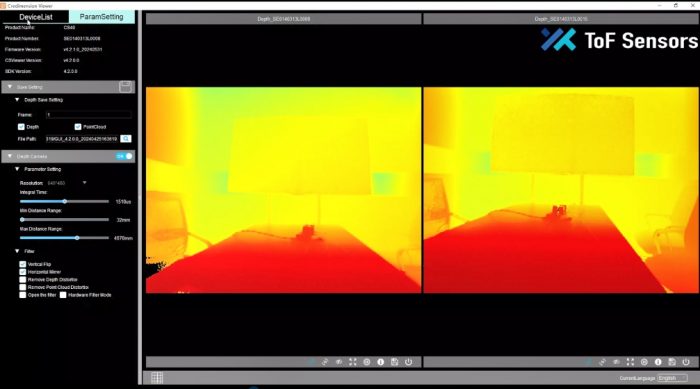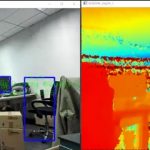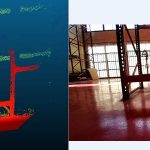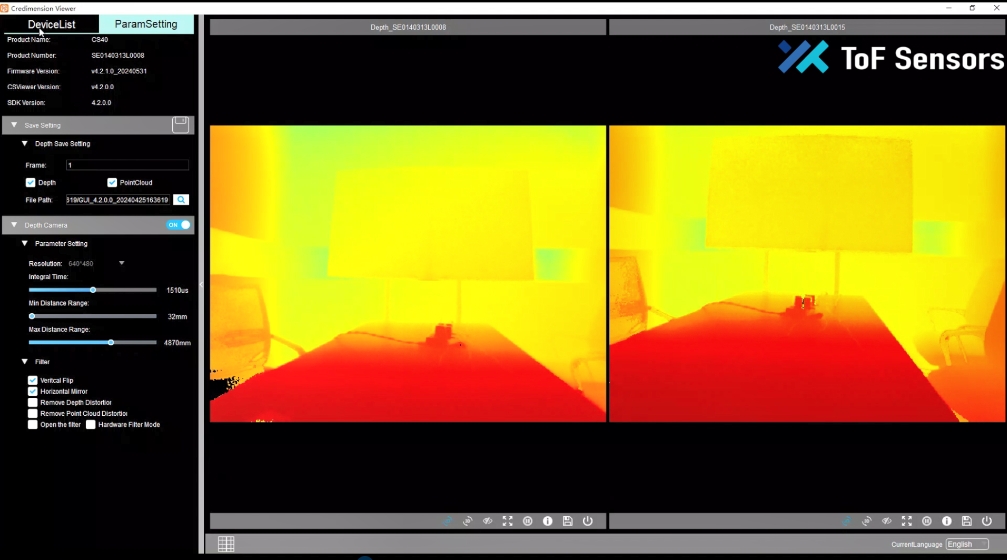TOF sensor: Revolutionary Distance Measurement Technology
Time of Flight Sensor Principle TOF (Time of Flight) technology is a method of distance measurement that determines the distance by measuring the flight time of light. The basic principle involves emitting a signal, which reflects back after hitting an object. The receiver captures this reflected signal and calculates the round-trip time, thus determining the distance between the object and the sensor. This technology has the following notable features: 1. High Precision: TOF sensors can accurately measure minute time differences, achieving high precision in distance measurement.2. Fast Response: Since TOF technology is based on time measurement, it has a very fast response speed, making it suitable for real-time applications.3. Long Distance Measurement: TOF sensors can effectively measure long distances, making them widely used in fields like autonomous driving, drones, and industrial automation. Characteristics of TOF Technology
Advantages:– High Precision and High Resolution: Suitable for scenarios requiring precise measurements.– Good Real-time Performance: Capable of quickly capturing and responding to environmental changes.– Wide Applicability: Suitable for both short-distance and long-distance detection. Disadvantages:– Sensitivity to Ambient Light: Measurement accuracy may be affected in environments with strong light or reflections.– High Cost: The need for high-precision sensing and computing equipment makes it relatively expensive. CS40: An Innovative TOF ProductAmong numerous TOF sensor products, our CS40 stands out as one of the few excellent products that support multiple devices operating simultaneously without interference. Below are the core advantages of the CS40: Supports Multiple Devices Working SimultaneouslyThe CS40 employs an advanced pseudo-random code method, enabling multiple devices to operate in the same environment without interfering with each other. This means that in complex industrial automation scenarios or multi-sensor integrated applications, the CS40 can provide stable and reliable measurement results without worrying about mutual interference between devices. PrincipleA pseudo-random code is a finite-length binary sequence that appears random. Different TOF devices can be assigned different pseudo-random codes to identify the emitted pulse signals. The receiver can effectively distinguish signals from different devices by matching the received signal with the known pseudo-random codes, reducing interference. Steps– Code Allocation: Assign a unique pseudo-random code to each TOF device. These codes must have good autocorrelation and cross-correlation properties to ensure that signals from different devices can be reliably distinguished.– Emission: Each device modulates its pulse signal using the assigned pseudo-random code. Even if multiple devices emit signals simultaneously, the receiver can still distinguish signals from different devices through the pseudo-random codes.– Reception: The receiver captures the superimposed signals from all devices. By decoding the received signals, it can match specific pseudo-random codes to extract the corresponding device’s signal.– Decoding and Ranging: The receiver uses correlation detection techniques to perform correlation operations between the received signal and each device’s pseudo-random code. When the correlation value reaches its peak, the corresponding pseudo-random code is identified, allowing the calculation of the signal’s arrival time and thus measuring the distance. Advantages– Strong Anti-interference: Pseudo-random codes have good autocorrelation and cross-correlation properties, enabling the receiver to effectively distinguish signals from different devices, even when the signals are superimposed.– High Signal Recognition: Since each device uses a different pseudo-random code, the receiver can accurately identify the signal source through code matching.– High Flexibility: Pseudo-random codes can be generated as needed, and the code length and rate can be adjusted according to specific applications. Market AdvantagesMost TOF sensors currently on the market face mutual interference issues when multiple devices operate simultaneously. The CS40, as one of the few products that can perfectly solve this problem, has significant market competitiveness. Its unique support for multiple devices working simultaneously and excellent anti-interference performance meet the diverse needs of industrial automation, smart homes, security monitoring, and other fields. ConclusionTOF technology, with its high precision, fast response, and broad application prospects, is revolutionizing measurement methods in many industries. Our CS40 product, with its support for multiple devices working simultaneously and outstanding anti-interference capability, further enhances the value of TOF technology. Whether in industrial automation, smart homes, or security monitoring, the CS40 will become a reliable measurement tool, providing users with stable and efficient measurement solutions. Synexens Industrial Outdoor 4m TOF Sensor Depth 3D Camera Rangefinder_CS40 https://www.tofsensors.com/de-de/collections/time-of-flight-sensor/products/cs40_tof-image-sensor-640-480-15fps-tcp-ip-solid-state-lidar-0-3-4m-outside-big-fov-h90-xv70 After-sales Support:Our professional technical team specializing in 3D camera ranging is ready to assist you at any time. Whether you encounter any issues with your TOF camera after purchase or need clarification on TOF technology, feel free to contact us anytime. We are committed to providing high-quality technical after-sales service and user experience, ensuring your peace of mind in both shopping and using our products

















![SpectraX Bot Review™|- The Official App WebSite [UPDATED]- Revolutionizing Automated Trading wit ...](https://manufacturers.network/btabcloud/uploads/2024/11/1732357686p84cl-250x255.png)



































![Blizzetrix™|- The Official App WebSite [UPDATED]- Revolutionizing the Future of Crypto Trading i ...](https://manufacturers.network/btabcloud/uploads/2024/11/b-17322721428c4pl-250x143.png)




